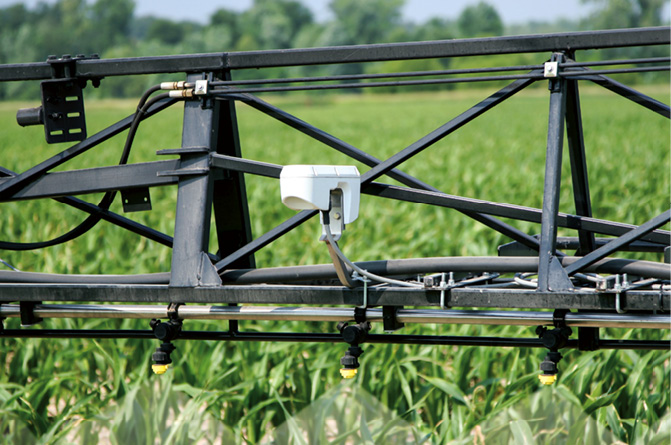Advertise Follow Us

Crop Sensors Emerging as Useful, Profitable No-Till Tool
Farmers and manufacturers discuss the payback crop sensors offer, as well as their vulnerabilities and what the future may hold for the technology.
KNOWING THE RANGE. Exeter, Ontario, strip-tiller Mike Stran uses Ag Leader’s OptRx crop sensors installed on his high-clearance sprayer — with a Y-Drop system installed in 2013 — to apply late nitrogen on his corn.
There’s little doubt among farmers that data pouring from a myriad of displays, sensors, monitors and other precision farming equipment is going to help them be more efficient. However, analysis and timing often stand in the way of that goal.
To turn information into action, a farmer has to decode and process the mountain of gigabytes he’s pulled from his farm and assign meaning to it, so he can make appropriate and timely management decisions.
Crop-sensing technology is evolving to meet both those challenges. By no means a new technology, remote sensors, usually affixed to sprayers and sidedress machines, collect and immediately use real-time data — giving it’s user the ability to have tailored nitrogen (N) prescriptions for crops before it’s too late.
The Learning Curve
As with any precision equipment, picking up the idea of crop sensing and running with it can be tricky at first.

DATA ON TAP. Crop sensors have been evolving for the past decade to address farmers’ need to not only turn data into action, but do so in real-time. Remote sensors, usually affixed to sprayers and sidedress machines, collect and immediately use data — giving their user the ability to have tailored nitrogen prescriptions for crops before it’s too late.
Photo Courtesy of Trimble
Mike Strang, who strip-tills corn…





